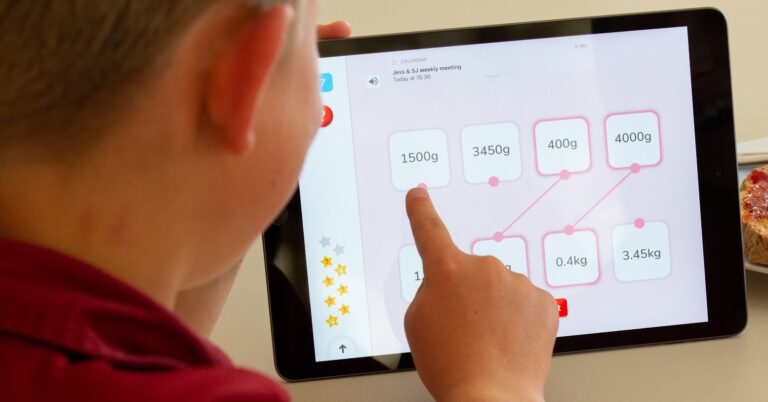

What’s the difference between rational and irrational numbers? Let’s take a look at what makes them unique!

Author
Amber Watkins
Published
Sep 21st, 2023




What’s the difference between rational and irrational numbers? Let’s take a look at what makes them unique and some examples!

Author
Amber Watkins
Published
Sep 21st, 2023


What’s the difference between rational and irrational numbers? Let’s take a look at what makes them unique and some examples!

Author
Amber Watkins
Published
Sep 21st, 2023
Key takeaways
Table of contents
Rational numbers are the most common numbers we see in the world around us. We use rational numbers on our speed limit signs, in recipes and on shoe labels to show what size we wear!
Although irrational numbers aren’t quite as common as rational numbers, they’re still really important. The most common irrational number is Pi! Without this very long, never-ending number, we wouldn’t be able to calculate the area of a circle.
Rational numbers are numbers that can be written as a fraction or a ratio.
Irrational numbers are numbers that can’t be written as a fraction or ratio.
Let’s take a look at some examples to help us identify rational and irrational numbers.
1. Integers: All integers are rational numbers. Integers include all real numbers, both positive and negative.
Since all integers can be written as a fraction, they’re all rational numbers.
Example: Is 3 a rational number?
3 can be written as 3/1 or 6/2.
Since it can be written as a ratio and fraction, it is a rational number!
2. Repeating decimals: All repeating decimals are rational numbers.
Repeating decimals have numbers after the decimal place that repeat. Even though it may be difficult to change repeating decimals into fractions, it is possible, so they’re also considered rational numbers.
Example: Is .66666666 a rational number?
.66666666 can be written as ⅔.
Since it can be written as a ratio and fraction, it is a rational number.
Unlock unlimited maths questions
Put your learning into practice with fun exercises + games that are proven to boost ability!
Get 2 FREE weeks of Doodle!
Use code 2WKS_2026 to enjoy unlimited questions and games
Get 1 FREE month of Doodle!
Use code MONTH_2026 to enjoy unlimited questions and games
Want to have a go at some questions? DoodleMaths is an award-winning app that’s filled with fun exercises covering rational numbers, irrational numbers and more!
Powered by an award-winning algorithm, it creates every child a personalised work programme tailored to their needs, boosting their confidence and ability in maths.
It’s aligned to the curriculum, so you can rest assured that your child is covering everything the need to get ahead in school. And best of all, you can try it for free!

3. Non-repeating decimals that are finite: All decimals that are finite (come to an end) are rational numbers.
Finite decimals can be written as fractions, so they are rational numbers.
Example: is 5.25 a rational number?
5.25 can be written as 525/100.
Since it can be written as a ratio and fraction, it is a rational number.
4. Perfect square roots: All perfect square roots are rational numbers.
Perfect square roots always have a whole number as the answer. Since the square roots are positive whole numbers, they are rational and therefore make the square root rational.
Example: Is √25 a rational number?
The square root of 25 is 5. Five can be written as 5/1.
Since it can be written as a ratio and fraction, it is a rational number.
1. Non-repeating, non-terminating decimals: All decimals that don’t repeat and continue indefinitely are the most common irrational numbers.
Decimals that never end can’t be written as a fraction without rounding. For this reason, they’re considered to be irrational, not rational.
Example: Is 5.432698762 a rational number?
No, it’s an irrational number because it can’t be written as a fraction.
Did you know?
The first 12 digits of Pi are 3.14159265358, and it continues on forever!
2. Non-perfect square roots: All square roots that are not perfect squares are classified as irrational.
You can enter the square root of the numbers 7, 12, or 18 into a calculator, but the answer you get won’t be rational. This is an indication that the square root of 7, 12, and 18 are irrational numbers.
Example: Is √12 a rational number?
The √12 is 3.4610161514 which can’t be made into a fraction. Because of this, it’s an irrational number.
Try DoodleMaths for free!
Select a year group
Yes
.25 is a rational number because it can be written as the fraction 1/4
Yes
√100 is a rational number because the square root of 100 is 10 and 10 can be written as 10/1 so it is a rational number, so √100 is also a rational number
No
4.986432 is an irrational number because it is a non-repeating decimal and it can’t be put in the form of a fraction or ratio
The primary difference between rational numbers and irrational numbers is whether the numbers can be written as fractions. In order to determine whether a number is rational or irrational, you must check to see if the number can be written as a fraction.
The most common irrational number is Pi or 3.14159265358. Some examples of rational numbers are 5, 10, 3/4, and .80. For more examples of rational and irrational numbers see our math practice app.
What is an irrational number?
Read a simple definition and explore more examples of irrational numbers
Roman numerals from 1 to 100
Learn the Roman numerals from 1 to 100 and have a go at some questions!
Lesson credits

Amber Watkins
Amber is an education specialist with a degree in Early Childhood Education. She has over 12 years of experience teaching and tutoring primary through university-level maths. "Knowing that my work in education makes such an impact leaves me with an indescribable feeling of pride and joy!"

Amber Watkins
Amber is an education specialist with a degree in Early Childhood Education. She has over 12 years of experience teaching and tutoring primary through university-level maths. "Knowing that my work in education makes such an impact leaves me with an indescribable feeling of pride and joy!"
Book a chat with our team
If you’d like to use Doodle’s browser version, please visit this page on a desktop.
To log in to Doodle on this device, you can do so through our apps. You can find out how to download them here: